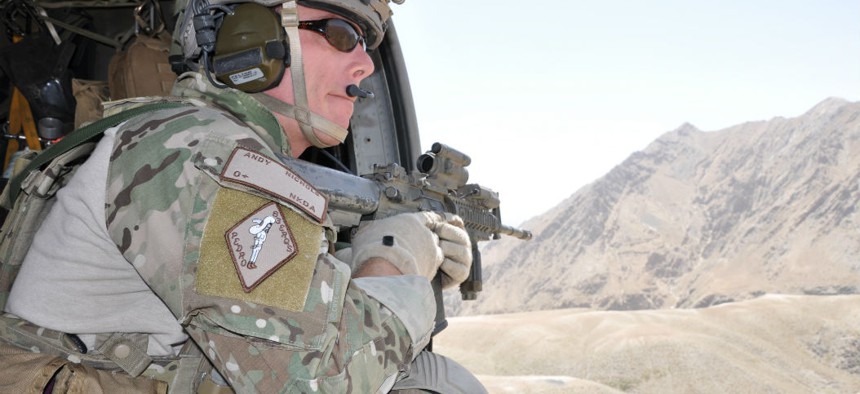DISA and the Army use commercial cloud to enable SIPRNet smartphone networking
Cloud migration is helping with JRSS implementation and additional security on combat-relevant handheld devices.
The Defense Information Systems Agency (DISA) and the Army are working with industry to extend commercial cloud technology to mobile devices as part of a broad effort to both improve access to data and provide security for forces on the move.
“As far as the future goes, we are looking at newer kinds of command and control. We are starting now to look at living in a mobile space. Commercial mobile devices are allowing us to get to higher levels of classification,” said LTG. Alan Lynn, DISA director.
A key objective for this effort, Lynn explained, is to help extend the military’s SIPRNet down to everyone, including dismounted units and those on the tip-of-the-spear in combat. Such technology brings the possibility of changing the paradigm regarding the transportable accessibility of classified information, he added.
“It used to be that you needed a suitcase,” Lynn said.
Drawing upon hardened commercial cloud networking technology, soldiers, sailors or airmen using smartphones and tablets will have secure access to classified networks. By extension, a commercial cloud can enable secure networking such that smartphone applications themselves can be better protected.
As part of this broadly-scoped DOD effort, industry giants like Microsoft are working with the services to extend cloud-based security and connectivity to mobile devices.
“We can move data out to a commercial cloud and leverage that information out to the tactical edge. This enables DOD to do things with data today that they have not traditionally done,” Leigh Madden, general manager of Microsoft’s U.S. defense business, told Defense Systems.
Madden said that building upon current operational success with these kinds of initiatives, Microsoft is also working in tandem with DOD to harden connections to mobile devices.
John Hickey, director of the cyber development directorate at DISA, emphasized that mobile devices can, as part of the effort, also leverage various methods of multi-factor authentication.
Lynn pointed to the Army’s Unified Capabilities (UC) program as a key example of how this strategy can be implemented.
The UC effort is based on an Army-AT&T collaborative effort to leverage the commercial cloud to improve networking interoperability using voice, video, screen sharing and chat functions for one million service business leaders on both classified and unclassified networks.
"Unified Capabilities is one of the first commercial cloud-based solutions that will be delivered across the Army Enterprise," said Sergio Alvarez, product lead, Enterprise Content Collaboration and Messaging.
By using a commercial cloud, users will be able to draw upon software to access voice services from any Army-approved end user device--desktops, laptops, tablet computers and smartphones.
Forward-deployed or dismounted soldiers will have an ability to connect and share combat-relevant data from farther distances, potentially beyond an otherwise limited network.
“This is a commercial off-the-shelf (COTS) contract that avoids a capital investment. There are many benefits to COTS--including saving money on initial investment, meeting IT requirements while avoiding costs, lowering maintenance investments and enabling cost-effective new upgrades,” an Army statement said.
The service will also provide video conferences and desktop sharing services, as well as multi-user chat functions.
As is the case with desktop systems, the strategy for this kind of cloud execution is often described in terms of centralized control – decentralized execution.
“We are departing from the old architecture where we relied upon dispersed server locations,” Lynn said.
Perimeter security, however, is still needed at both centralized locations and what’s called off-premises locations.
When it comes to more traditional fixed locations, increased cloud networking and security at a central server location brings the added benefit of helping implementation and security for the ongoing Joint Regional Security Stacks (JRSS) effort.
“JRSS is the first instance where we have broadly agreed the need for this to be a joint capability to provide protection in a regional fashion instead of at every post, camp or station. You can see what is happening on the net all across the Department of Defense,” Lynn said.




